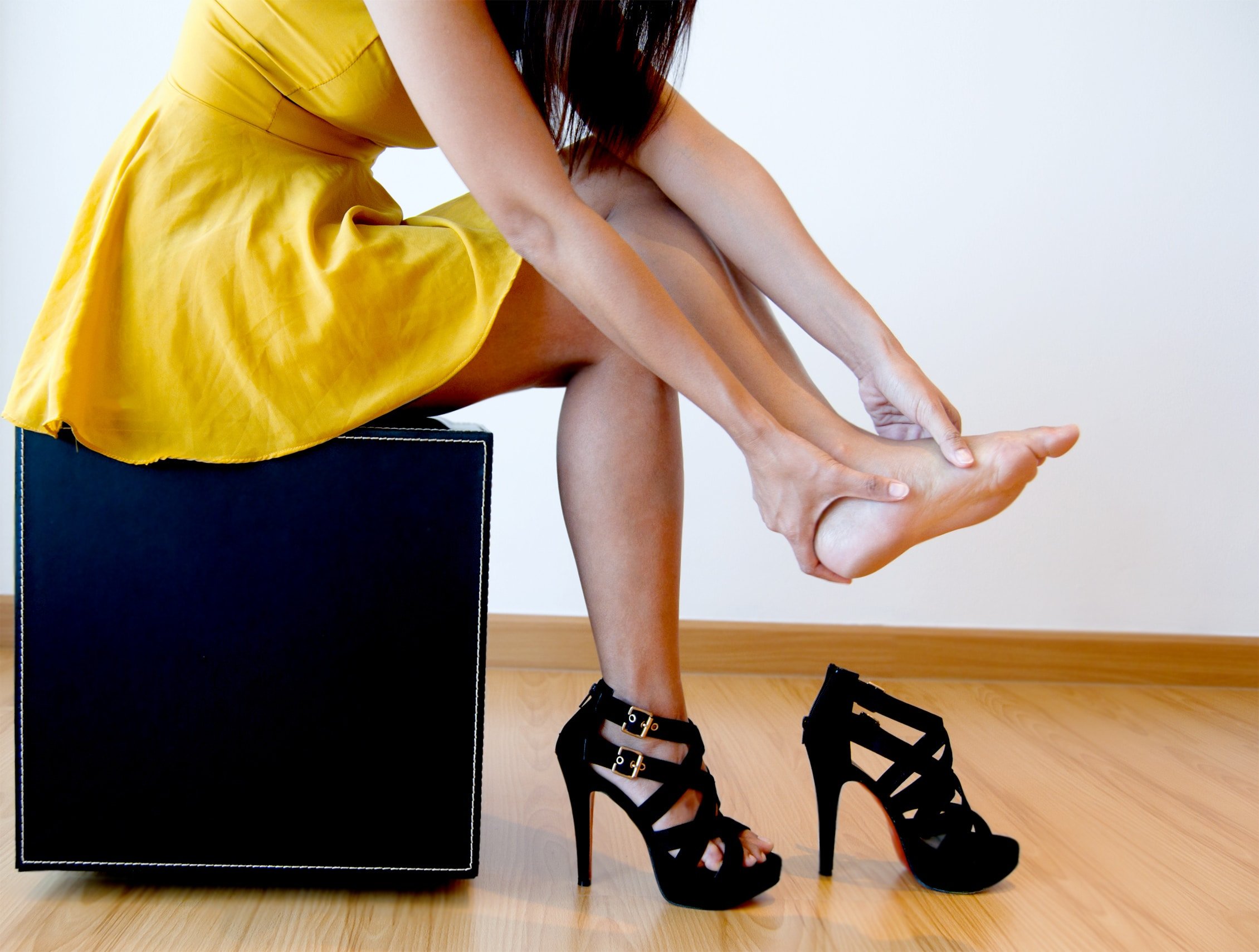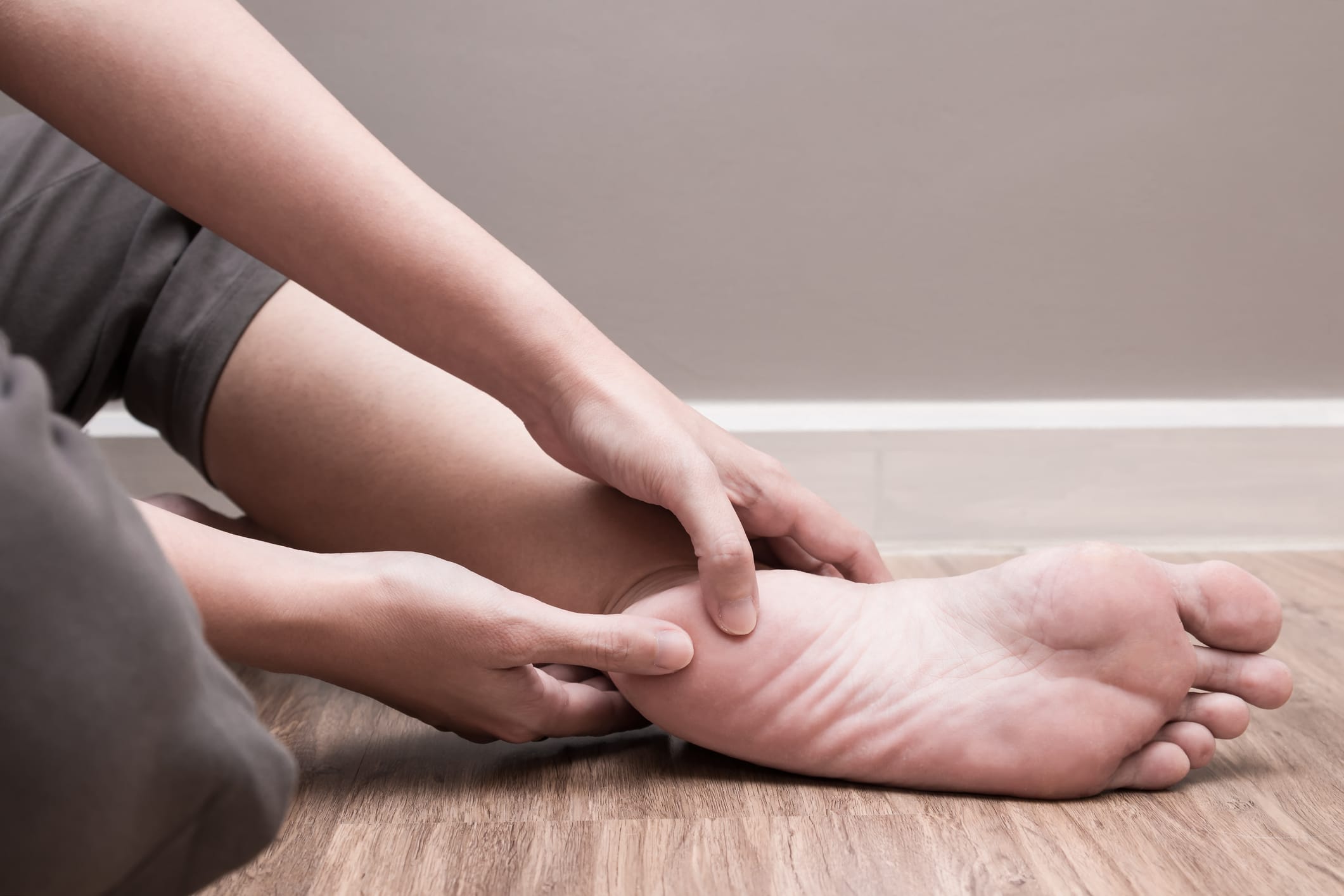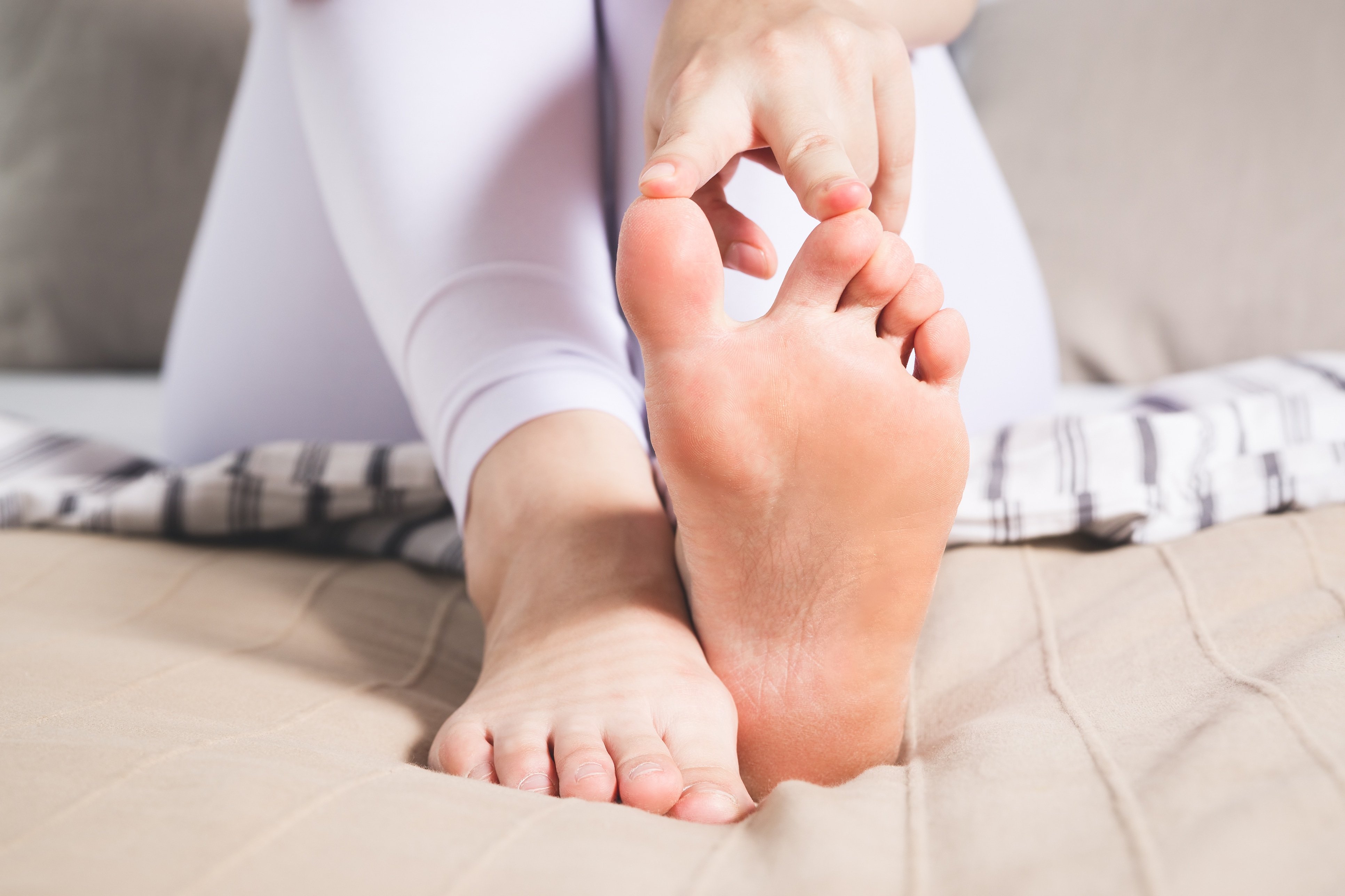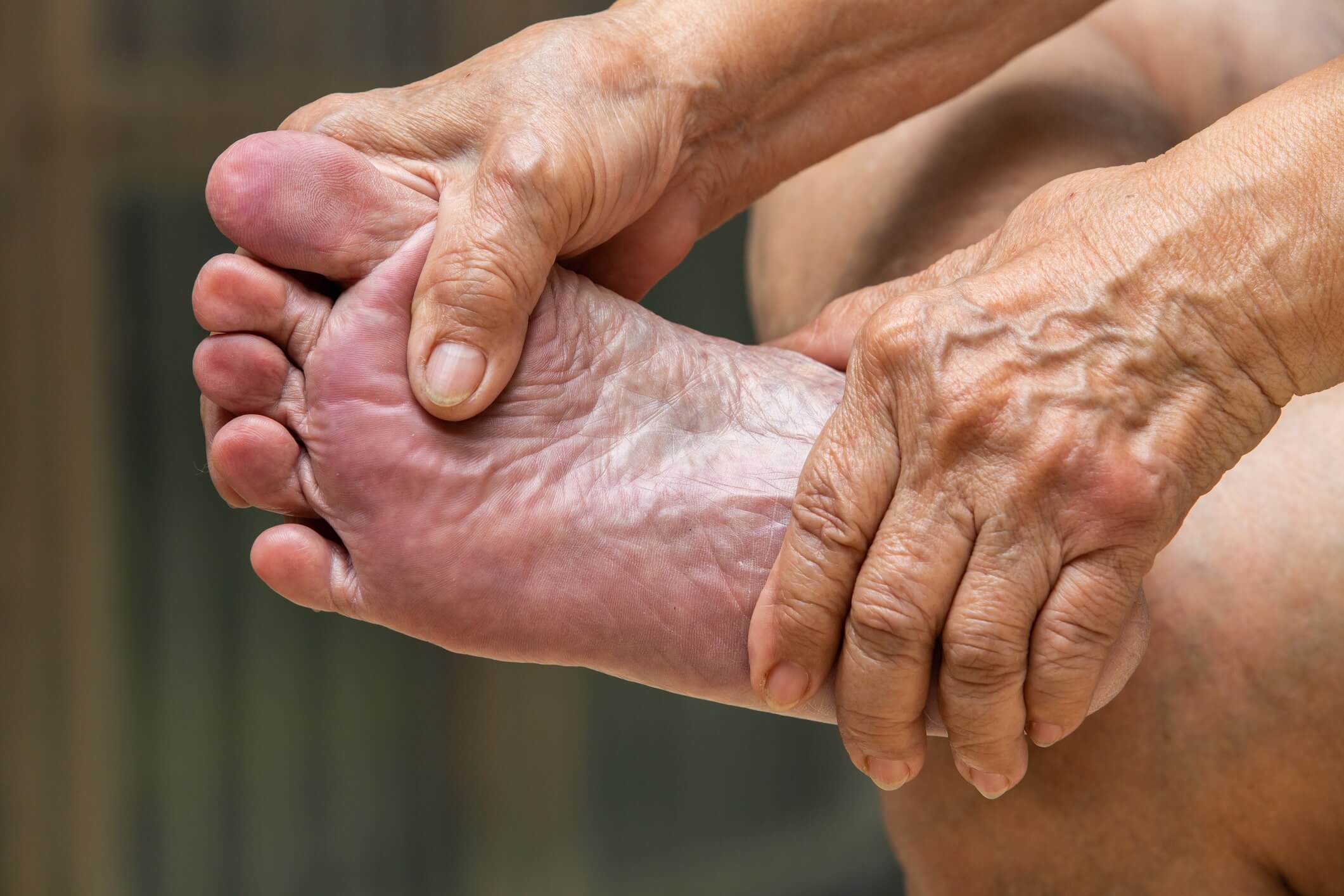Connect With Us
Blog
Items filtered by date: December 2019
Can Wearing High Heels Cause Fallen Arches?

High heels are common articles of footwear used by women. Some might be required to don these type of shoes for professional purposes. Others may enjoy wearing them because they look good and enhance their sense of fashion. Regardless, high heeled shoes could potentially precipitate various foot problems.
One relatively common foot malady is fallen arches. Advanced Foot Care and Ankle Center, a leading provider of foot care, invites readers to learn about this condition, answer the question of whether there is any negative correlation between high heels and fallen arches and offer suggestions as to how impacted individuals can find fallen arch relief.
What Are Fallen Arches?
Most healthy feet contain an upward curve situated towards their middle known as an arch. A normal arch is supported by properly functioning tendons, which are structures of stretchable tissue that keep the foot attached to the heel and various bones located inside it. Fallen arches, also medically categorized as flat feet, occur when these tendons fail to correctly stretch or do not stretch at all.
The Symptoms Of Fallen Arches
In certain instances, flat feet might not precipitate any physical manifestations. However, when symptoms do occur, impacted individuals typically have flat looking feet and may experience pain while walking or executing any other type of physical activity that requires weight to be placed on their feet. More serious manifestations could include swollen feet, feet that tire without much exertion, mobility challenges, stiffness or discomfort that could spread to an afflicted person’s back or legs.
What Causes Fallen Arches?
Flat feet could be brought about by a variety of factors. Common causes include inflamed or damaged foot tendons, dislocated or broken bones within an impacted foot, foot malformations present from birth, damaged nerves, obesity, the aging process and illnesses such as diabetes and rheumatoid arthritis. In addition, the type of footwear one wears may also contribute to the development of fallen arches.
High Heels And Fallen Arches
As the name implies, high heeled shoes have high bases located at their heels. Women who frequently stand in and wear this kind of footwear force their foot tendons to stretch abnormally, which might eventually precipitate the onset of flat feet. Scientists who have conducted research on this subject opine that high heeled shoes are often a significant cause of flat feet in women and the reason women seem to develop the condition with greater regularity than men.
Finding Fallen Arch Relief
Those impacted by flat feet might employ different methods of relief. The specific method chosen will often depend on the underlying condition precipitating the malady, as well as the ailment’s severity. Some common treatment protocols include:
Exercises
Simple maneuvers that stretch and stimulate foot and ankle tendons may alleviate the condition.
Padding Shoes With Added Protection
For some people, fitting their shoes with padded soles or orthotic products may provide the additional protection and comfort necessary to ensure their foot tendons properly stretch.
Using Medications
When flat feet elicit pain or swelling, impacted persons might take over-the-counter pain killers or drugs that curtail swelling and inflammation.
Surgery
Should fallen arches be the result of more serious manifestations such as bone abnormalities or torn tendons, surgical intervention might be indicated to provide relief.
Wear Appropriate Footwear
People suffering pain from flat feet might find improvement by changing the type of shoes they regularly wear. Such shoes should fit comfortably and not place any undue pressure on foot tendons like high heels do.
Those afflicted with fallen arches and any other type of foot discomfort are encouraged to contact Advanced Foot and Ankle Center. The primary physician Dr. Pedram Aslmand has extensive experience treating this condition and many other foot maladies.
Do Podiatrists Offer Urgent Care?

Foot and ankle emergencies can happen at any time during the day. The most common of these include sprains, broken bones, dislocations, contusions, and infections. When you realize that your foot has been injured, you should seek immediate treatment from a qualified podiatrist. Many myths surround foot emergencies and foot care. However, it is vital always to make sure that you get the expert opinion of a podiatrist because injuries left untreated lead to severe complications and at times even temporary and permanent loss of the ability to walk.
Dispelling the foot care and podiatrist myths
Most people do not understand how dangerous their foot injuries are until they get to the point where they cannot even move their feet. Here are some of the myths which an urgent care podiatrist tries to dispel:
- The foot cannot be broken if you can still move it: there are people who believe that as long as you are in a position to move your foot after an injury. Most of the time, people ignore smaller fractures because the pain is not enough to warrant emergency treatment. A fracture, regardless of its degree, needs proper care immediately after it happens.
- Soaking a foot or ankle injury in hot water starts healing: This is the biggest mistake that you can make after you get an injury. When you break your foot or ankle, you promote blood flow to the point of the fracture, which promotes swelling and the collection of pus. Cold treatment is the best First Aid alternative before you see an emergency podiatrist.
- Elastic bandages are enough for ankle injuries: this is another First Aid myth that has been around for the longest time. The problem with the treatment is that the extent of the injury is not assessed using X-rays. When you see a podiatrist, they take an X-ray to determine the extent of the damage. This is followed by proper casting to immobilize the foot and promote healing.
In summary, it is important to realize that words such as fracture, sprain, and crack are not different. The reality is that they all represent a broken bone and if it is not treated in time, recovery will be long and painful.
Benefits of calling an urgent care podiatrist for foot emergencies
Many people have been programmed to head to the ER when they have a broken foot or another injury. While the ER is the sensible first place to look for help after an injury, in most cases, after they have stabilized you, they will send you to a specialist, and that is the podiatrist. If you can go directly to the foot doctor, they will help you find out the extent of the injury, and then offer appropriate treatment. It is less stressful to go directly to the podiatrist, and because they are foot specialists, they will identify the problem fast.
Never underestimate a foot injury or emergency. When small injuries are left to fester, they become huge problems which need time, money and a lot of physical therapy to heal.
Treatment Options for Heel Pain & Heel Injuries

Common Treatment Options for Heel Pain & Heel Injuries
Everyone has heard of back pain and its treatment options. Dealing with heel pain is similar, but the problem could worsen if you constantly walk on the injured foot. Here are several forms of treatment for heel injuries and the associated symptoms.
Heat/Ice Therapy
Pain is the biggest symptom of an injured muscle or nerve. Ice or heat therapy is one of the fastest and easiest heel pain treatment options. Ice relieves burning sensations and reduces inflammation, while heat reduces pain and stiffness. Either method works for pain relief and should be used regularly.
Natural Remedies
People take natural remedies to avoid visiting the doctor and taking prescribed medication. For pain relief, massaging works to relieve sore muscles. Some people combine the use of heated water therapy, and others use essential oils to increase stimulation in the muscles.
Certain herbs are prescribed for pain relief. Herbs like ginseng and St. John’s Wort are recommended for pain and arthritis, and cloves are used to relieve headaches and inflammation. However, the medical research on their effectiveness is inconclusive.
Pain Medication
When ice or heat packs don’t work, the next step is to consult a doctor. There are certain pain medications, like codeine or nonsteroidal anti-inflammatory drugs (NSAIDs), that work on reducing pain without removing its source. It could take weeks or months for the injury to heal, but in the meantime, the pain is removed.
Physical Therapy
When there’s an injury, move the muscle around to reduce stiffness and circulate more blood. Stimulation is an important part of physical therapy that involves performing basic exercises. Regardless of what the injury is, physical therapists always recommend movement. They work closely with each patient, developing individual treatment plans and assisting in the sessions.
Rest
Physical therapy is recommended, but only under a professional’s supervision. Straining the muscle too much will cause additional injury. In most cases, waiting is the best treatment for heel injuries. Changing your schedule is temporary but necessary to promote healing in your body.
There are a few methods that are the most effective at treating heel injuries. Ice, heat and physical therapy are included in a handful of heel pain treatment options. However, the best treatment is to consult a doctor, especially if the pain is severe, because only a medical professional knows what to do. Contact a specialist at the Advanced Foot and Ankle Center to schedule an appointment.
What Is A Sesamoid Stress Fracture?

Fracture Treatment Long Beach
A sesamoid stress fracture is a fracture of one of the tiny sesamoid bones located under the big toe. This condition is usually related to repetitive stress like increasing running speed too quickly. These tiny fractures are hard to diagnose because they cannot be seen on an X-ray.
Sesamoid bones are bones that are embedded within a tendon. There are two sesamoid bones in the foot. These tiny bones are about the size of a bean and located under the big toe. When you walk, a large percentage of your body weight is transferred to the sesamoid bones.
Sesamoid Stress Fracture Symptoms
While there are many conditions that cause foot pain, there are some notable symptoms of sesamoid fractures. You may have one or more of the following symptoms.
- Pain – Pain from a sesamoid fracture is located in the ball of the foot and the big toe joint.
- Swelling – Swelling is often limited to the big toe and the area surrounding the big toe joint.
- Bruising – Bruising is often present in the affected area, and it will likely be tender to the touch.
- Limited mobility – The range of motion in the big toe is often limited.
A sesamoid stress fracture may be caused by an injury like jumping from a high platform to a hard surface or a sports impact injury. More often, they are caused by repeated stress injuries often found in athletes and runners.
Sesamoid Stress Fracture Diagnosis
Sesamoid fractures are difficult to diagnose. These tiny fractures are often not visible until they begin to heal. It is important to diagnose sesamoid fractures quickly to avoid further damage. Podiatrists use different tests to diagnose sesamoid fractures.
- Self-diagnosis – If you suspect a sesamoid fracture, you may be able to determine the problem by yourself. Lightly press the bottom of the big toe joint with one finger until you locate the tiny sesamoid bones. If one is notably more tender than the other, you might have a fracture. If the entire area is painful, the diagnosis is more likely to be a form of tendinitis. If you suspect a fracture, see your doctor.
- History – It is important for your podiatrist to hear how your injury began. Specific types of injury and stress are what cause sesamoid damage.
- Physical exam – Your doctor will provide a visual exam to look for swelling and other symptoms. Pressure will be applied to the sesamoids to determine if a fracture is likely.
- Imaging – Your podiatrist may order imaging such as x-rays, magnetic resonance imaging (MRI), or computed tomography (CT) scan. These tests are usually to confirm the diagnosis suggested by the history and physical exam.
Sesamoid Stress Fracture Treatments
Sesamoid injuries can be difficult to heal. The most important thing you can do to speed recovery is to take the injury seriously. Follow your podiatrist’s directions and rest your injury.
- Conservative treatment – There are several conservative treatments to speed the healing process. Stop the activity that caused the injury. Immobilize the joint with a plaster cast or stiff-soled shoes. Ice the affected area and keep the foot elevated. In some cases, a bone stimulator may be used. Sesamoid fractures take 6 – 8 weeks to heal properly through non-surgical treatments.
- Surgery – If results are not experienced within 4 – 6 weeks, surgery might be necessary. Surgery is usually avoided when possible since the sesamoid bone is partially or completely removed.
Sesamoid stress fractures are notoriously slow to heal, which is particularly frustrating to athletes, runners, or anyone particularly active. It is important to properly diagnose the condition and allow full healing time. Continuing to add pressure to any sesamoid injury can lead to additional damage. It is crucial to take this tiny injury seriously for a complete recovery. To schedule a consultation with our office for a complete diagnosis contact us today.
5 Spring Sports Injury Fails

When the spring sports season arrives, it’s time to prepare for all the fun athletic events everyone has missed throughout the long winter months. It’s time to get out and enjoy the nice weather and get lots of good, healthy exercise. Unfortunately, along with the sporting events come the inevitable injuries. Sports injury fails are as common as grass stains on uniforms. When they occur, make sure you have a plan of action in place to get help fast.
The most common sports injury fails involve the foot and ankle areas. These types of injuries have the potential to turn into serious, long-term issues if not treated quickly and professionally. They include:
Stress Fractures
A stress fracture results from spending an extended amount of time carrying a great deal of weight and/or carrying weight unevenly. Minute cracks form in the bones of the foot/ankle area. This type of injury occurs most often in the fibula, tibia, the calcaneus bones, and the metatarsals. Long-distance running is one common way that stress fractures occur. Treatment for stress fractures generally begins with an MRI, then possibly wearing a hard-soled boot, shoe, or in more serious cases, a cast. The footwear or cast is worn for 6 to 12 weeks.
Ankle Sprains
Ankle sprains are the most common of all sports injuries. This type of injury results from overstretching the ligaments of the ankle, resulting in tearing. These ligaments are responsible for holding together and supporting the bones of the ankle. A sprain can only be determined by a diagnostic image of the ankle. This type of injury requires immobilization and slow, gradual physical rehabilitation. Obtaining a correct diagnosis of an ankle sprain is of the utmost importance for proper physical therapy to be determined to effectively treat the injury.
Achilles Tendon Ruptures
This type of injury occurs when the fiber of the soft tissue that connects the calf muscle to the bone of the heel becomes torn. This happens when there is a sudden, quick change in motion direction. It can also be the result of a hard landing. The injury is often described as feeling like one has been shot in the ankle accompanied by an audible popping sound. Studies have shown that 80% of all Achilles Tendon ruptures occur during recreational sports. The majority are caused by tennis or track-and-field type sports activities. The injury can be treated with a cast, but oftentimes requires surgery.
Ligament Tears
Ligament tears occur when the ligaments that connect bone to bone become overstretched to the point of ripping. These types of injuries occur due to sharp, sudden changes in motion direction, blunt force trauma to the area such as in a football tackle or landing badly from a jump. They’re classified as mild grade I sprain, moderate grade II Sprain, and severe grade III sprain. The level of severity is determined by whether the ligament is severely stretched, partially torn, or torn completely. Treatments range from physical therapy to surgery.
Shin Splints
Shin splints are a very common sports injury. This type of issue is a result of basically overworking the foot/ankle muscles and tissues. They most frequently occur when physical activity is undertaken without proper footwear, or by having extremely rigid arches or flat feet. Treatments include immobilization and rest of the affected appendage, anti-inflammatory medication, compression, ice packs, and exercises to improve flexibility.
Most of these sports injury fails can be avoided by using caution, proper form, practice, and adequate warm-up exercises when participating in physical activities. You can learn more about preventive measures from Dr. Pedram Aslmand at www.footadvice.com. As part of the care team at Advanced Foot and Ankle Center, Dr. Aslmand is an expert in the field of sports-related injuries and the most effective treatments for healing and repair.
Try These 3 Exercises At The Office for Foot Pain

Foot pain can hit any time or location, but perhaps the most frustrating place is in the workplace. Whether you are tied to your desk trying to finish proposals or rushing about the office on a busy day, no one wants to deal with unmediated pain while finishing their work load. Regardless of the situation, try the following office foot pain exercises to help alleviate your problem.
Toe Extensions
If you are sitting in a straight back chair, slip off your shoes and try toe extensions. Pick up the foot that has developed pain and place it on your opposite thigh. Take the toes on that foot in one hand and pull gently up towards your ankle. This will result in a good stretch you should be able to feel in your heel and your ankle. Hold the stretch for ten seconds and release. Repeat up to ten times. You may want to massage underneath your foot with your opposite hand when performing this stretch as well.
Toe Splays with Makeshift Tension Band
This is another simple exercise that will help alleviate foot pain in the office. Once again in a straight back chair, remove your shoes and socks. Grab an office rubber band and wrap it securely around the toes of each foot. Remember you will be using this device to create tension therefore you want it secure, but not tight enough to cut off circulation. Drop your feet back to flat on the floor. Spread your toes on both feet and feel the stretch throughout your foot. Hold the stretch for ten seconds and relax. Repeat up to ten times. You may want to start toe splays without the rubber bands as a tension aid, but using resistance will help build up strength and relieve pain.
Ball Roll
This exercise works great with a tennis ball, but you can also use one of those tension balls you often find floating around the office. Take off the shoe and sock on the foot requiring attention. Sit in a straight back chair and place your foot down on top of the ball. Roll the ball back and forth, using the ball to massage your arch. Continue for two to three minutes until you achieve relief.
Calf Stretch
Calf stretches are another great way to help relieve foot pain. Standing directly in front of an office wall, prop the toes of the painful foot on the wall and rest your weight on the balls of your feet. Lean into the wall for ten to fifteen seconds to help stretch the muscles. Relax and repeat up to ten times.
Since your feet contain over twenty-five bones as well as over one hundred muscles, it’s common to develop discomfort in them. Using these office foot pain exercises can help relieve your foot pain and enable you to go about your work day with only momentary pause. If the foot pain is unresolved, you may want to consider a visit with Dr. Pedram Aslmand. As a professional podiatrist, he will help you resolve your painful situation and recommend a personal treatment plan for you.
A Primer on RICE for an Ankle Sprain

Ankle sprains are one of the most common sports injuries. Indeed, a person doesn’t even have to play sports to sprain their ankle. Ankle sprains come from falls, from dropping something heavy on the ankle or even from stepping the wrong way. According to podiatrist, Dr. Pedram Aslmand of Advanced Foot & Ankle Center, if a person feels that they’ve sprained their ankle, they should perform RICE for an ankle sprain then call the doctor.
First, What’s a Sprained Ankle?
A sprained ankle results when the ligaments, which are bands that connect the several bones of the ankle to each other, are twisted, stretched or ruptured. If a person has an injury severe enough to rupture a ligament, the bones of the ankle may be fractured as well.
How Does a Person Know They Have a Sprained Ankle?
A person should suspect that they have a sprained ankle if the ankle is painful, swollen and stiff. The ankle may no longer be able to bear their weight, and they may notice a bruise that gradually moves down the foot to their toes. To make sure it is an ankle sprain, the doctor will examine it and may call for an X-ray to make sure that no bones have been broken.
The RICE Procedure
Even before a person sees a doctor, they should perform RICE for an ankle sprain. Even if there is no sprain, the procedure can’t hurt and soothes the ankle even if it’s only been dinged. RICE is an acronym for:
Rest
Rest simply means the person should take weight off the ankle, and put it in a more comfortable position where it can be protected from further injury.
Ice
Though ice should never be placed directly on the site of an injury, a cold pack is good to reduce swelling and pain. Even then, a towel should be placed on the ankle before the cold pack is applied. The rule of thumb is to apply the pack between 10 and 30 minutes every two hours for the first three days after the injury. After two or three days, a warm compress can be applied to the area after the swelling has gone down.
Compress
To compress means to wrap the ankle with an elastic dressing. An Ace bandage is a good choice for this. This reduces the swelling, but the bandage shouldn’t be put on so tightly that it can interfere with circulation and cause the ankle to swell even further. A patient can tell if the bandage is too tight if it causes more pain and brings tingling, numbness or more swelling. The skin will also feel cool.
Some people will wrap dressings around the cold compress itself. The recommendation is to wrap a gauze or crepe bandage from the joint below the injury to the joint above it. With a sprained ankle, this means the dressing will extend to just above the toes to the knee.
Elevate
The patient should prop their ankle on a pillow while they’re icing it or just resting. Ideally, the ankle should be elevated above the level of the heart.
A person who believes they have a sprained ankle should do the RICE procedure, then get in touch with Dr. Aslmand at Advanced Foot & Ankle Center. The number is (562) 933-3136.
Treatment Options For Morton’s Neuroma

A medical condition known as Morton’s Neuroma can cause significant discomfort and a certain degree of mobility issues for those impacted. Fortunately, treatment is possible. This brief blog will examine what this malady is, causes, symptoms and potential treatment for Morton’s Neuroma.
Morton’s Neuroma Defined
Morton’s Neuroma occurs when tissue in the ball of an impacted person’s foot thickens. This thickened tissue impacts nearby nerves, which produces the associated discomfort.
Causes
Physicians and medical researchers opine that inflammation within impacted tissues precipitates the thickening. However, there are certain risk factors that increase one’s chances of developing the ailment including wearing high heeled shoes, participation in sports like running and rock climbing, as well as foot maladies like bunions, hammertoes or high arches.
Associated Symptoms
In certain cases, afflicted persons might not notice any appreciable issues for quite some time. When physical manifestations do occur, said problems can and often include pain (typically between the third and fort toe), toe numbness, a tingling or burning sensation in the foot’s ball that into the toe region or other areas of the foot. Other impacted individuals are said to experience a sensation that feels as if they are standing on a rock or have a small stone stuck in their shoe.
Diagnosis
Medical professionals recommend seeing a podiatrist or medical doctor should one experience any of the aforementioned manifestations for durations lasting longer than a few days. On certain occasions, a doctor might be able to confirm the diagnosis by detecting a lump in the stricken individual’s foot or a clicking sound when examining specific foot bones.
That said, when such outward signs are not visible, a healthcare professional might need to employ certain diagnostic tools to confirm their suspicions. Apparatuses like X-Rays, Magnetic Resonance Imaging (MRI) devices and ultrasound machines have proven effective in confirming a Morton’s neuroma diagnosis.
Treatment For Morton’s Neuroma
As with many ailments, specific treatment will be determined by the condition’s severity and the specific underlying cause.
In some cases, successful treatment or alleviation of untoward symptoms can be accomplished by engaging in simple actions such as changing footwear. For example, stricken women who regularly don high heels might notice less discomfort by wearing said shoes less frequently or identifying other choices of footwear. Sometimes, ceasing physical activity for a specific period, applying ice to the impacted region or using over-the-counter pain relievers might prove effective.
However, in severe presentations of the ailment or when the associated symptoms elicit greater pain or disability, more aggressive forms of treatment might be indicated. Such remedial efforts include:
Decompression Surgery
During this procedure, nearby tissues are cut to lessen the pressure on impacted nerves.
Injections
In certain instances, steroid injections into the impacted region may provide needed relief.
Nerve Removal
Nerve removal is a surgical procedure in which the impacted nerve(s) are extracted. This process is typically only initiated as last resort and could lead to permanent numbness or mobility difficulties.
Contact Us
Individuals experiencing foot pain or discomfort they believe might be Morton’s neuroma are encouraged to contact the Advanced Foot and Ankle Center. Our team of doctors, led by Dr. Pedram Aslmand, can perform an examination, confirm a diagnosis and determine the best form of treatment to consider.
Morton’s Neuroma
According to a new study on Morton’s Neuroma treatment, published in Musculoskeletal Imaging performed from 2004 to 2008, 84% of patients had complete pain relief with five to seven injections of alcohol into the enlarged nerve.
This is very close to the succes rate our office in Long Beach has been noticing. The treatment is very safe and effective in reducing the size of the entrapped nerve. The procedure requires no down-time, incision and is done under local anesthesia with ultrasound guidance.
Pedram Aslmand, DPM, FACFAS
Podiatrist
Diabetic Peripheral Neuropathy
If you have diabetes, you are at risk for peripheral neuropathy (nerve dysfunction and pain). Symptoms of peripheral neuropathy are burning, tingling, numbness, and other abnormal sensations. This typically occurs in the feet and lower legs or in a stocking-glove pattern (feet and hands). Peripheral neuropathy is the major risk factor for diabetic foot ulcers. If you are experiencing these symptoms, it is important to visit your podiatrist for advice on how to protect your feet and decrease pain.
Dr. Erin Kalla is a foot & ankle specialist in Long Beach, CA. She specializes in foot & ankle surgery, sports medicine, and diabetic foot care.

